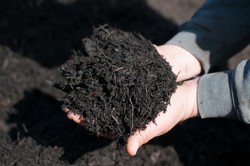Conservation agriculture
Conventional agriculture damages soil structure, affecting soil productivity, agricultural sustainability and ecosystem services. An alternative is conservation agriculture (CA), intended to maintain soil structure by minimising disturbance. Subsidiary crops form an important part of CA. The EU-funded OSCAR (Optimising subsidiary crop applications in rotations) project investigated the use of LM and CCs as an element of CA. The team studied system management optimisation, technology improvement and soil ecological services. Potentially useful new highly productive and disease resistant CCs were identified. Others had interesting secondary metabolite profiles. Researchers concluded that LM benefits both organic and conventional European farming. The technique requires high crop densities and regular sowing patterns. Mechanical tools for suppression of subsidiary crops worked best during CC flowering. In mild climates, a clover LM canopy can establish after the main crop harvest. In cooler climates, solutions involved sowing the LM crop before the main crop. High biomass CCs can help reduce weed problems associated with reduced tillage (RT). Where growing seasons are short, additional methods for weed control are needed. Already after one year of RT, soil aggregate stability, organic matter content, and microbial activity were increased. Mycorrhiza fungi (AMF) were shown to contribute up to 30 % of soil phosphorous uptake and appropriate CCs can sustain AMF levels during fallow periods. RT either neutrally or positively affected yields and weeds, especially in subtropical Brazil. RT reduced potato blight in Brazil and Germany, when combined with dead mulch. Compost applications also reduced root-rot diseases affecting peas. Economic modelling showed clear long-term advantages for RT and subsidiary cropping. The method was also found to be suitable for a wide range of conditions. OSCAR results showed RT's strong potential to improve the cropping system, reduce resource use and improve sustainability. Hence, in the future European soils may be better managed and more productive.
Keywords
Conservation agriculture, living mulch, cover crops, OSCAR, subsidiary crop

